tl;dr
I offer my 10 best quad stretches. We discuss why your quads or hips might feel tight and why your hip or knee might hurt. We talk about when stretching isn’t the best solution for pain. I offer alternatives to stretching that might better solve your problems. We talk about the negative and positive side effects of stretching. We even talk about seemingly unrelated causes of quad tightness. I leave you with a short appendix on the pertinent anatomy (because what else would you expect from someone with a masters degree in anatomy?).
Table of Contents
- Introduction
- Common Causes of Tight Quads
- Why Does Your Knee Hurt?
- Negative Side Effects of Quad Stretches
- Positive Side Effects of Quad Stretches
- Relaxing Your Tight Quads and Fixing Your Knee Pain
- Assessing Yourself: Should you stretch your quads?
- My 10 Best Quad Stretches
- My 11 Best Alternatives to Quad Stretches
- Uncommon Causes of Tight Quads
- Appendix: Anatomy Related to Quad Stretches
Video
This video is a sort of “summary” of my thoughts on quad stretches. It contains about one-third of the information on this page.
State of the Quad Stretches Union Address
Quad stretches are a staple in many lives. And, let’s face it, if you like stretching, you’re probably super flexible already.
Would you believe we never once talked about quad stretches during my master’s degree in anatomy?
I grew up playing ice hockey all of my youth, starting every practice by doing our stretches.
Hindsight is 20/20, but I wish I knew then what I know now.
Are Quad Stretches Helpful or Harmful?
I wrote this article because quad stretches are often oversimplified to the point of being harmful. Since a lot of people do them, it’s easy to just throw them into your day or warm up. But how can you know if you’re doing more harm than good? And what is the correct way to do them? Or is there a better alternative to quad stretches?
My hope is that you’ll come away from this with a bunch of good quad stretches you can use, but also appreciating the nuances of this surprisingly complicated topic. This will help you build muscle, lose weight, and stay pain free for the rest of your active life.
First, we have to identify WHY you want to stretch your quads. Depending on your answer, I may have some better solutions for you.
As a quick overview, the three major reasons people will stretch their quads are…
- Their quads or hip flexors feel tight
- Their knee, hip, or low back hurts
- They’ve heard you should stretch
Common Causes of Tight Quads
My personal training specializes in diagnosing movement problems, especially for people who are coming out of physical therapy. Noticing just a few tiny details in someone’s posture during their daily activities or exercises can tell you why their quads are tight.
Poor Posture
Posture is a bit of a blanket statement here and won’t let us get to the root cause of WHY the quads are feeling tight.
As we adopt a posture, our body learns how to keep that posture. If you stand with poor posture all day, you’re actually practicing how to have poor posture.
Sadly, fixing poor posture is not as simple as reminding yourself to sit up straight. I wish it was; that would be so simple!
Sitting
I think there are two main points to make here.
First, holding any single posture for extended time will stiffen your body. If you’re sitting all day for work and NEVER get up to take a break, then your body is going to get stiffer. It’s not because your hip flexors become shorter, but because your body learns to be in that seated position. And it’s associated with a host of other stressful body inputs like staring at a screen and stressing out about work.
It’s not the sitting, but the inactivity. Standing all day ALSO makes people feel like poo.
Second, poor sitting posture is not the problem. People slouch when they sit at the computer because it helps their eyes read the screen and it removes the burden of holding up your bodyweight. Our brains will make sure we do what we are good at. It’s a bit like sports: all swimmers are lanky, all software engineers have a forward head posture.
So lots of slouched sitting helps you excel at your computer work, but that doesn’t mean it’s good for your bones, joints, and muscles.
Key takeaway: staying in one spot for too long will surely tighten your quads.
Anterior Pelvic Tilt
When trying to decide WHY the quads are tight, it’s helpful to picture the anatomy of the muscles involved.
When the low back gets more arched and the butt sticks out behind you, we call that an “anterior pelvic tilt”. If you’ve spent any time on the internet (especially Reddit), then you’ve heard of this MONSTROSITY of a posture.
The relationship of all the surrounding musculature was originally deemed “lower crossed syndrome” in 1979 by a Czechoslovakian physician named Vladimir Janda.
Good Reasons to Have an Anterior Pelvic Tilt
I’m a bit of an “Anterior Pelvic Tilt Apologist”, though. We’re generally doing it for some good reason. Here’s a few reasons why you might have that anterior pelvic tilt:
- You’re stiff after sitting all day
- You’re getting tired from standing
- You lift heavy—and often
- You arch your back when you do lower body exercises
- Your airway is narrow and you have sleep apnea
- You slept five interrupted hours each of the last two nights
- You’ve been super focused on a project for work
- Your stomach is upset from what you just ate
- Your corrected vision prescription is old
- You’re at a loud concert
- Your shoes are super soft
- You’re trying to show someone how good your butt looks
Fully understanding all this would require an in depth discussion about stress and posture, but that’s outside the scope of this article.
If you have an anterior pelvic tilt, it might be for a good reason. You’ll have to figure out what that reason is before you can really find a good fix.
How to Fix an Anterior Pelvic Tilt
Also, there are certain muscles that help you fix or manage the anterior pelvic tilt.
- Relax the hip flexors and low back
- Activate the lower abdominals, glutes, and hamstrings
We’ll get to the specific ways I recommend doing this here in a little.
I’ve included an appendix at the end of this post with a description of all the bones, joints, ligaments, and muscles you might want to know about to become an expert in quad stretching.
Tight Hip Flexors
Tight hip flexors are highly correlated with tight quads. In fact, one of your quads is ALSO a hip flexor!
In general, if you have one, you probably have the other as well.
Also, these like to play with that anterior pelvic tilt we just discussed. You will need to address all of these problems simultaneously if you’re going to loosen the quads.
Heavy Lifting
Muscles are usually stiff because we have TAUGHT them how to be stiff. Heavy lifting is a great example. You can’t pick up a car with a wet noodle.
Muscles are like rubber bands, and lifting makes those rubber bands thicker and stiffer.
If your quads are feeling stiff after a month of heavy lifting, maybe it’s time to celebrate? Just make sure you’re keeping the tightness in check. Vary up your training from program to program instead of just hitting 5×5 every day for six months.
Repetitive Motion
The more often we do things, the better we get at them. The brain controls tons of what you do, but every cell in your body has memory.
Now the key is just to make sure your repetitive motions are teaching you the RIGHT things.
Poor Lifting Technique Secondary to Poor Programming
Lifting heavy weights provides a strong stimulus for change. You can use this to your advantage if your technique is excellent, but if you’re constantly maxing out, pushing your body to the brink, and not allowing your body time to recover, then you’re not learning good technique.
If you’ve perused the lifting side of the internet, you’ve heard that “PRs and 1RMs don’t look pretty”. These PRs—personal records—and 1RMs—one rep maximum weight—push your body to the limit.
Don’t get me wrong: you have to push yourself to the limit. Occasionally. But NOT at every training session.
A buddy of mine, strongman Chase Karnes, once said in a presentation: “Too many people spend their time TESTING strength instead of BUILDING it.”
Very heavy lifting is useful, but, like anything, it can be overused.
Poor Lifting Technique Secondary to Poor Movement Ability
There are two major things I look for when I’m coaching my clients on their lower body lifts:
- Is the pelvis dumping too far forward (see “Anterior Pelvic Tilt” above)
- Are their heels or toes coming up off the ground?
Feet can tell you so so so much about a person’s movement. In fact, in my virtual training sessions with clients in cramped spaces, I will ask them to just show me their feet and as far up as their camera will go. I’m often looking at the lower half of someone’s body, but that’s because it’s usually all I need to see!
Do you remember that old children’s song?
The hip bone’s connected to the… knee bone!
The knee bone’s connected to the… ankle bone!
Something like that.
That song is actually a really accurate representation of human body mechanics. If we go “joint-by-joint”, we can predict what the next joint will do.
An Example Joint-by-Joint Movement Dissection
A relevant example: if you get to the bottom of your squat and your heels come up off the ground, then I know you’re…
- Overloading the back of the ankle
- Overloading the front of the knee
- Pinching together the front of your hip
- Arching your back
- Probably looking upward but maybe not
How do I know this? Well, years of experience. But also physics. If I saw your heels come up at the bottom of your squat and you had PERFECT technique in every other joint of your body… you would fall! You would lose your balance and fall.
This reiterates our theme: when you see something going wrong, figure out WHY it’s going wrong. You could have tight quads because you don’t have the hip mobility to squat down without shifting your weight forward.
Dysfunctional Breathing Mechanics
Okay, this one is a can of worms. But this can needs to be opened.
We’ve already discussed various postures, specifically the anterior pelvic tilt, that can lead to tight quads, but did you know these postures can be driven by breathing pattern disorders?
Three Types of Breathing Patterns
First example: the overbreather
Check out yourself in a mirror, then take a big inhale. Heyyy, how you doin’? Now do it again, but REALLY exaggerate the inhale. What does your body do? The simplest answer is that the back arches to pull more air into the lungs.
Second example: the well-intentioned
I work with a lot of people who have been taught how to breathe well, either from singing practice, yoga, or even other trainers. Sometimes, though, what they’ve learned is just flat out wrong. It’s often the OPPOSITE of a normal breathing pattern. If you inhale and your chest sinks down, you’re breathing backwards, shutting off your abs, and going to experience tight quads and hip flexors.
Third example: the obstructed
Some of the unluckiest ones, though, might breathe really well! But they can only do it so much. If your nose holes or throat hole are too small, then it’s tougher to pull air into your body. It’s just like a hose: if you need to put out a huge fire, you want a fire hose, not a garden hose. To get more oxygen into their muscles, the obstructed breather has to FORCE the air in, often collapsing the soft tissue around the airway and creating an apnea, sniff, or snort sound.
Consequences of Dysfunctional Breathing Mechanics
All of these poor breathing patterns come with their own brand of posture. Most will result in extra effort breathing, poor balance like we’ve discussed above, and ultimately lead to your quads getting tight.
To test if your breathing mechanics are not quite correct, see the Breathing Patterns Test later in this article.
Soreness
Okay, enough complicated stuff. Here’s a simple one: sometimes your quads are tight and stiff just because you had a hard workout yesterday and the muscles are sore. Quad stretches are actually pretty great for these situations.
Why Does Your Knee Hurt?
If you’re looking for quad stretches because your knee has been bothering you, first make sure your doctor is okay with your experimentation. There could be some major issues going on.
Medical Disclaimer
Exercise is not without risk, even for healthy individuals. Same goes for diet. Make sure your doctor is okay with your self-experimentation. By visiting and remaining on this website, you acknowledge and agree that you have been assessed by a qualified medical professional who has given you consent to take part in physical activity.
Quad Dominance
There are two types of muscular tension: active tension and passive tension.
Active tension is when your muscle generates force because it’s contracting.
Passive tension is when your muscle generates force because it’s stretching.
Walking with good balance on the feet leads to even, reciprocal motions. Bringing the leg forward turns on the hip flexors. Driving the leg backward turns on the glutes and hamstrings.
If, however, a person does NOT have good postural balance, cannot feel their heels when they squat, or just notices a lot of pressure on the balls of their feet, then this reciprocity disappears. Those quads and hip flexors never get a chance to shut off. Instead, they turn on, then they turn on some more. This increases the active tension that goes through the quads.
So all of this leads to more compression at the knee and knee cap. But that in itself isn’t all that bad. The biggest issue is the loss of CHANGE. A chronically active quad reduces blood flow.
Check out my length-tension relationship article for more on active tension and passive tension.
Patellar Tendonitis
Patellar tendonitis is a bit of a blanket statement for general knee pain. This symptom, though, is more relavent now after our previous talk about quad dominance. Joints get overworked when the tissues surrounding them can’t move. Intuitively, it makes sense that you’d want to stretch this area, and it can indeed lead to some improvements.
I will tell you, though, that if I have a client who is having these issues, I’m probably not going to first prescribe stretches. Instead, I want to teach them how to fix some of those postures we discussed earlier. I want to help them find a normal amount of anterior pelvic tilt, make sure they’re breathing in the correct way, and give them an appropriate training program.
If you’re struggling with tight quads, you probably need to spend more time getting really good at the basics of performance: strength and endurance. To help you build a stronger training base, I’ve published a series of programs I’m calling “Foundations” over on my other site that are available for purchase.
IT Band Syndrome
Iliotibial (IT) band syndrome is quite common in runners. A deeper understanding of anatomy will help us realize WHY the knee feels so wrong.
First, here’s a look at the outside of the thigh.
The iliotibial band is a long, broad stretch of thickened fascia running along the outside of the leg.
It is NOT a muscle, but it IS connected to two major muscles: the gluteus maximus and the tensor fascia lata.
So this thickening of the fascia starts up at the hip and runs all the way down to the knee.
Original Explanation for IT Band Syndrome
For years, medical professionals have explained IT band syndrome as a result of the friction of the IT band on a bone in the knee called the lateral epicondyle.
This, however, is unlikely. The iliotibial band is not really it’s own thing, but merely a thickening of the fascia that covers the entire thigh, extensively secured to the thigh bone. And the fluid-filled sac or “bursa” that is cited to be irritated by this friction? Most people don’t have it [ref].
But there is still obviously some ailment we call “IT band syndrome”. So what’s really going on?
Research: A Better Explanation for IT Band Syndrome
The best explanation for IT band syndrome that I’ve found comes from the lab of late Cardiff University professor Mike Benjamin, PhD [ref]. Their original opinion piece suggests that IT band syndrome is not due to friction on the epicondyle but instead due to the illusion of movement created by alternating compression of the front and back halves of the iliotibial band [ref].
As a metaphor, they’re saying the irritation from the IT band is less like sandpaper scratching back and forth, and more like two fingers playing the same two keys on a piano over and over.
Irritated Fat Pad
They note that the pain issues probably arise from a highly innervated fat pad underneath the iliotibial band. This band gets irritated from the repeated compression of the anterior and posterior portions of the IT band, as well as compression from the vastus lateralis. Do it too much and your nerves start to say, “Okay, that’s enough!”
In fact, Benjamin’s lab even examined this underlying fat tissue in overweight and lean people and found no difference in the amount of highly innervated fat deep to the IT band. The following image of two knee MRI scans shows this: the white part (fat tissue) around the ITB label is similar in both MRI scans, but the person on the left has a lot more fat tissue underneath their skin (arrows) than the person on the right.

It’s important to understand this mechanism because if you want to do quad stretches to alleviate your IT band syndrome… it’s probably not going to help much.
Patellar Tracking
Another common diagnosis is poor patellar tracking, which is a fancy way to say your kneecap is in the wrong spot.
The knee joint consists of three major bones: the femur, the tibia, and the patella.
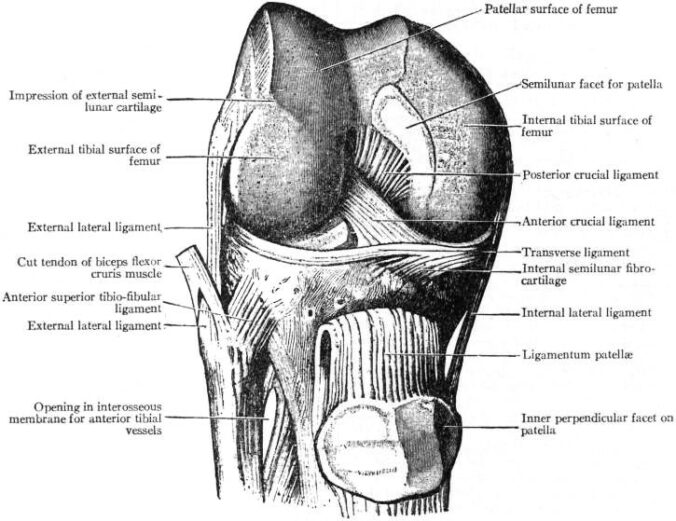
If we take a second to examine the shape of the femur and tibia, we can really appreciate the patella and how it’s supposed to move. The femur is the top bone. The tibia is the bottom bone. The patella is in the middle front.
Aligning the Patella
The knee part of the femur has this huge notch in the middle. This gives the patella somewhere to sit.

The knee part of the tibia has a recess and a little bump of bone underneath this recess.

The femur keeps the kneecap in the middle and prevents it from riding upward. The tibia keeps the kneecap from falling downward.
Misaligning the Patella
When we say we have poor patellar tracking, what we mean is that the kneecap SHOULD be in the middle, but has started drifting to one side instead. This places extra stress on one half of the undersurface of the patella, and our best guess is that this is why you started experiencing knee issues.
But why is it drifting to one side?
Is it VMO weakness?
The common explanation is that one half of the quad muscles are working too hard and the opposite half is too weak. Therefore, strengthen the vastus medialis obliquus (VMO), the very lower part of the inner quad, and then your patella will track better.
Sadly, this doesn’t really work in practice, and that leads us to believe that it’s probably not the issue.
Important clarification: even if strengthening one half of the quads does not fix the problem, this might still be a pretty accurate picture of what’s going on. Visually looking at these knees, a trained eye can legitimately see a patellar tracking problem. Measuring the activity of these particular quad muscles also tells us that, yes, some are underactive and others are overactive.
So why wouldn’t this work?
Joint Postures Determine Muscle Function
Muscles are dumb; they only do what they’re told to do. If the knee bones are out of alignment, then some muscles will be better at turning on than others. This goes back to our previous discussion on active tension, passive tension, and the length-tension relationship. Long muscles appear weak.
The best explanation, then, is that the patella is out of alignment not because of something the patella and its neighboring muscles have done, but because the position of the femur dictates the alignment of the knee cap.
So if the problem is not specifically with the quad, does it make sense to treat it with quad stretches? Probably not.
Runners Knee
“Runners knee” is a blanket term for various knee ailments that result after running a lot. It could be referencing patellar tracking problems, IT band syndrome, meniscus defects, and a host of other stuff. You’ll need a more specific diagnosis to really know if quad stretches will help you, but my guess is that they probably aren’t going to help much. Your time would be better spent learning proper knee alignment and building strength in a variety of movements, such as squats, deadlifts, and lunges. More specifics later!
Knee Alignment
“Knee alignment” is a more directive, positively spun term that I prefer using when discussing patellar tracking. Read the above section on patellar tracking for more on knee alignment.
Negative Side Effects of Quad Stretches
As your fitness father, I’m here to tell you that everything you do has consequences. Even something seemingly innocuous, like stretching your quads, can sneak up on you.
Here are some of the potentially harmful effects of stretching quads that don’t need to be stretched.
Weak, Inhibited Quads
Maybe the most well-known side effect of stretching is decreased performance. Stretching works by telling the nerves that control the muscles to chill out. It says, “Relaxxx buddy. We’re good here.”
The problem is that sometimes you don’t want to relax. You want to be strong and fit! That’s why I try not to prescribe any long-held stretches in the warm up right before a training session unless someone has pain or mobility issues that require the stretches.
This weakening of the quads is fleeting, though, and won’t cause lasting issues in strength. But if you need to stretch your quads, you may want to do them after your lifts.
INCREASED Quad Tightness
This is maybe the biggest misconception about quad stretches. They’re often used to reduce quad tightness. And yes, they do that… for a short time.
Over the long term, however, the quad stretching may not be doing anything to address why the quads are tight in the first place. So when they get looser, the brain says, “What the heck? I thought we tightened you up. Guess we’ll go TWICE AS TIGHT this time around.”
Our lives are full of repeating cycles like this. Physiology lecturers in universities across the world call them “negative feedback loops.”
If you make sure you’re stretching for the appropriate reasons, then you’ll be fine.
Quad Muscle Pulls
It’s easy to simplify problems for the sake of teaching them. I’ve even done it in this article, generalizing anterior pelvic tilt as an arch in the back, inhibited abs, and tight quads. But anterior pelvic tilt is NOT that simple.
You may have this anterior pelvic tilt on one side of your body but NOT on the other side. When this happens, both quads may be tight, but one could actually be tight because it’s being pulled too long, while the other is tight because it’s too short. If this is the case, the natural asymmetry in the body suggests it will likely be the right quad that’s too long.
What happens when you stretch a muscle that’s already too long?
At best, nothing much.
At worst, you increase the likelihood of a quad pull and worsen your mobility problems.
Use the Supine March Test outlined later in the article to help you diagnose if you have a long quad or excessive asymmetry.
Sciatica
Sciatica is occlusion or irritation of a major nerve running down the back of the lower extremity. This sciatic nerve supplies your posterior thigh, calf, and outside calf. If those areas are bothering you—well, you should see your doctor—but you may want to ask her about sciatica.
This affliction seems out of place for a discussion on quad stretches; the sciatic nerve runs down the BACK of the leg, not the front by the quad.
I bring sciatica up because I’ve heard people complain about this. These people are (a) overstretching the quads, and (b) forgetting to tuck the hips.
If you do not stabilize the hips with a posterior pelvic tilt, you will not focus the stretch on the quads and hip flexors. Instead, you’ll start compressing your lower back and SI joint area, and that’s where we start aggravating the sciatic nerve.
Leg Numbness or Tingling
Leg numbness and tingling is more general than sciatica. If you have the numbness and tingling down the back of your leg, then it’s probably related to the sciatic nerve. If you have the numbness and tingling on the FRONT of your leg, then it’s probably related to the femoral nerve or one of its siblings.
There are two types of numbness and tingling:
- Fleeting, only immediately after a stretch or exercise (or poop)
- Long lasting throughout most of the day
If it lasts a long time, talk to your freaking doctor already.
It’s not uncommon to have some numbness or tingling after a stretch if the stretched muscle group is particularly tight. I see it a lot with upper extremity stretches (namely pec stretches), but it can happen in the lower extremity as well. Make sure your quad stretches look appropriate, like outlined above. If they look egregious, fix them. If the numbness doesn’t go away, talk to your doctor.
Femoral Nerve Irritation
The femoral nerve runs down the front of the leg and actually underneath the quads. This intimacy means that tension on the quads can mean pressure on the femoral nerve.
This is different than the normal tension your feel when your quads are tight. The resting position of the quads, even if they feel tight, is generally much further forward than if the quad is being stretched. Once stretched, the tension through the quad pulls it backward, compressing the femoral nerve.
If someone describes symptoms of femoral nerve irritation, I’m pretty certain they are overdoing their stretch. Perhaps you don’t need to stretch. If nothing looks wrong, or if you alter it but symptoms persist, talk to your doctor.
Positive Side Effects of Quad Stretches
I know I’ve spent a lot of time bashing quad stretches, but they aren’t always bad! Here’s a bunch of good stuff that can happen, too.
Reduced Quad Stiffness
Long held stretches (30 second holds) are good for telling muscles to shut down. Now remember, you might want stiffness in the quads for greater performance, but if you’re done with your workout, you’re sore from yesterday’s workout, or you just need to move around a bit, then quad stretches are a good solution.
Full Knee Range of Motion
This is a complex topic that will likely require help from a medical professional.
Sometimes, however, the knee won’t bend because there’s too much compression around the knee joint. This compression is what gives us joint stability, but can also restrict mobility at the same time. If the quads are heavily compressing your knee, then you might see increased knee range of motion after stretching (i.e., inhibiting) them.
Again, if this is a persistent issue, seek help from a medical professional.
Reduced Hip Flexor Tightness
One of the quad muscles is ALSO a hip flexor, and this muscle might be making you feel like your whole freaking leg is stiff. Properly stretching the quads not only relaxes this quad muscle, but the same technique also stretches other hip flexors.
Fewer Knee Issues
Knee pain is a broad and complex topic. We’ve outlined many specifics above, but an article on the internet cannot cover all possibilities. I’ve done my best in this article to give you the tools to reason through your knee pain.
Though these tips generally help a lot of my clients manage their knee problems, there could always be something more risky going on that requires medical attention. Talk to your doctor if symptoms don’t improve!
Relaxing Your Tight Quads and Fixing Your Knee Pain
Here’s a brief summary of this article up until now to help you understand when quad stretches will help you. And perhaps more importantly, this will help you identify when quad stretches might actually make your problem WORSE!
After these bullets, I’ll bring you through a self-assessment to help you determine what exactly your body needs so you’re using your time as efficiently as possible to fix your nagging aches and pain, improve your mobility, and be able to train hard and uninhibited for maximum long term progress.
When are quad stretches a bad idea?
- Most knee-related problems can be worsened or at best see no result from quad stretches. This includes the aforementioned IT band syndrome, patellar tracking problems, and the broad diagnosis of runners knee.
- Most online diagnoses of anterior pelvic tilt and poor posture are more often worsened by quad stretches rather than helped. Seek to identify WHY the pelvis is anteriorly tilted. It is often not solely because of the quads. Slight anterior pelvic tilt is normal.
- If you don’t feel better after doing quad stretches, stop doing them. It’s possible you’re causing a new problem, such as sciatica or a quad pulls due to overstretching.
- If your immediate goals are to be stronger, stretching weakens you. Avoid holding static stretches before a workout unless you need it for a specific mobility reason.
- If your issues are due to poor breathing patterns, stretching means less time spent fixing breathing patterns. SOME stretches can assist proper breathing patterns.
- Stretching provides temporary relief of discomfort caused by quad overuse, i.e. quad dominance, but this relief will not last as long as training better posture and lifting technique. If the feet can’t stay flat while doing squats, deadlifts, and lunges, quad stretches are not going to fix any quad tightness or knee issues.
When are quad stretches a good idea?
- Sore from tough workout
- Tight from inactivity
- Been sitting a lot and just need to move around
- Tight, stiff, or sore from repetitive motions
Assessing Yourself: Should you stretch your quads?
I’ve put together a list of self-assessments to help you navigate the rest of this article. You’ll find quad stretches, mobility drills, and exercises later in the article, but you don’t have to do ALL of them.
The best use of your time will be to conduct a self-assessment, after which I will be able to give you specific recommendations tailored directly to your body’s limitations.
Test 1 of 4: Questionnaire
If you agree with any of the following statements, it’s safe to skip quad stretches.
- I am stretching to relieve my hip, knee, or low back pain, but don’t notice lasting improvement after stretching.
- I’m stretching to reduce my anterior pelvic tilt.
- I don’t normally feel better after stretching.
- I’ve developed new problems since recently starting stretching, such as sciatica, quad pulls, or a tingling sensation in my leg.
- I’m stretching to prepare for a strength workout and these stretches are not addressing a specific mobility limitation.
If any of the following are true, the quad stretches in this article may provide you some benefit.
- I am sore from a tough workout.
- I am tight from inactivity.
- I’ve been sitting a lot and just need to move around.
- I’m tight, stiff, and sore from repetitive movements, such as house work, yard work, or something else associated with my job.
Test 2 of 4: Breathing Pattern

Execution
- Stand with one hand on the belly and one hand on the chest
- Take a slightly exaggerated inhale and examine when each hand moves
Grading
- If both hands do not expand at the same time and rate, that is a sign that your diaphragm and pelvic floor are not working together. This promotes overbreathing or mild hyperventilation which stiffens muscles, restricts mobility throughout the entire body, and impairs good posture.
Fix
- Perform the control pause listed in this article
Test 3 of 4: Squat

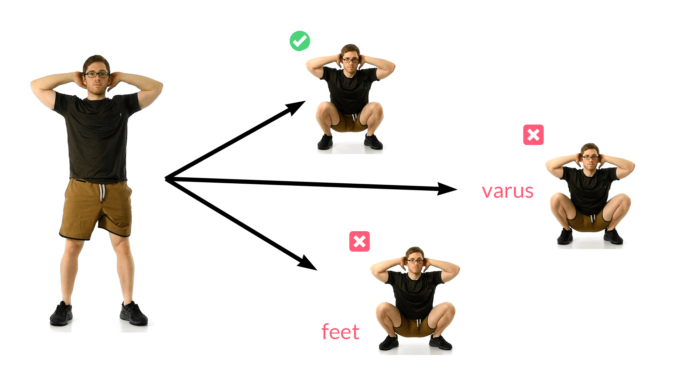
Execution
- Stand with feet shoulder width apart and toes turned out five degrees
- Squat down as low as you can
- Return to standing
Grading
- This test can diagnose a mobility limitation if any of the following happened during the squat:
- Toes rotated out
- Heels left the ground
- Back arched
- Knees splayed outward
Fix
- Perform the mobility drills listed in this article
Test 4 of 4: Supine March
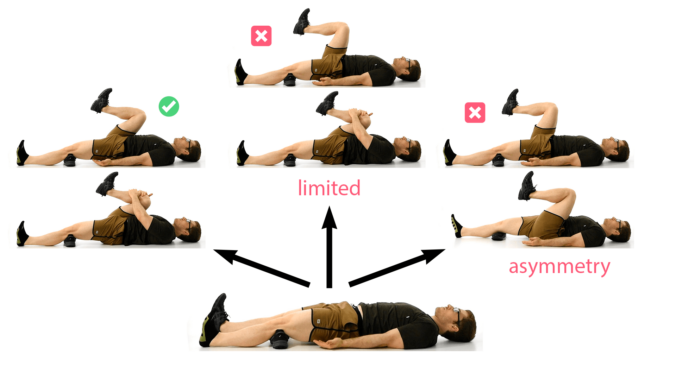
Execution
- Lie on your back with legs straight, arms by your sides, and a 2-4″ bolster underneath your knees
- Keeping one leg straight with the back of the knee pressed into the bolster, bend the other knee toward your head as far as possible
- Once stabilized, grab the leg and pull it toward your chest
Grading
- If the bending leg can’t break 120 degrees, then you have a hip mobility limitation
- Pain during the test means a hip mobility limitation is likely, but talk to your doctor about it
- If you gain more than 20 degrees of motion when pulling your knee to your chest, then you have a motor control deficit and the quad and hip flexors of the bending leg are long
- If you have a difference in range of motion between right and left sides, then you have asymmetrical hip mobility
Fix
- If you found you have limited mobility on both sides, perform the mobility drills listed in this article (though you probably already knew to do this based on your squat test)
- If the tests told you that your quad is long or your mobility is asymmetrical, then make sure to practice the Active Thomas Test Exercise twice daily for five sets of five breaths
Getting Further Help
If you’re having trouble diagnosing and treating your issues, you should find a physical therapist if you have pain or hire a coach if you’re simply working on movement.
My 10 Best Quad Stretches
To reiterate our previous discussion, since I realize the nuance of this article: you should do the following stretches if you’re sore from a tough workout, tight from inactivity, been sitting a lot, or been doing repetitive motions.
If you’re trying to do stretches to fix another problem, you probably want to skip to the next section of this article on alternative solutions.
FIRST: The Single Best Cue for All Quad Stretches
Please please please pay attention.
This is the number one thing to do if you want to maximize the effectiveness of your quad stretches.
One of the quads is actually a hip flexor. If you bend your knee without regard for your pelvic position, you will not stretch that quad and you can put undue stress on your back and lower body nerves.
As I describe the exercises below, I will say, “Tuck the hips.” This stabilizes the pelvis and will dramatically increase the stretch intensity.
We discussed the anterior pelvic tilt in detail earlier. Tucking the hips will do the opposite—a posterior pelvic tilt.
Posterior Pelvic Tilt; How to Tuck the Hips
To tuck the hips:
- Imagine you’re wearing a belt
- Attempt to pull the belt buckle up towards your belly button
- Simultaneously attempt to drop your tailbone down towards the ground
Here’s what it looks like when standing:
…prone:
…on your back with feet propped up (supine 90-90):
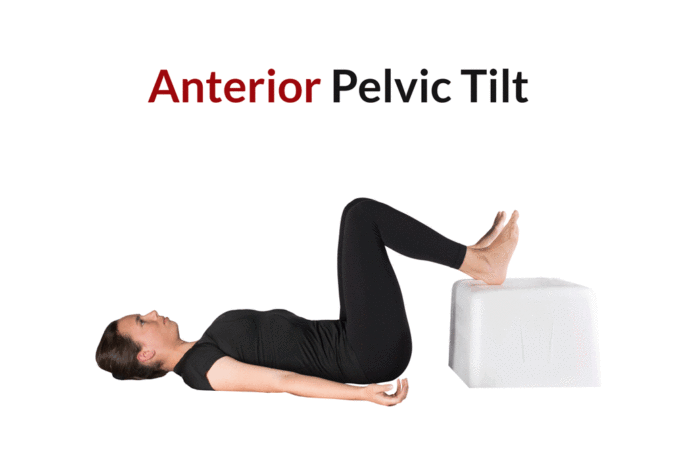
…on your back with feet on the floor (supine hooklying):
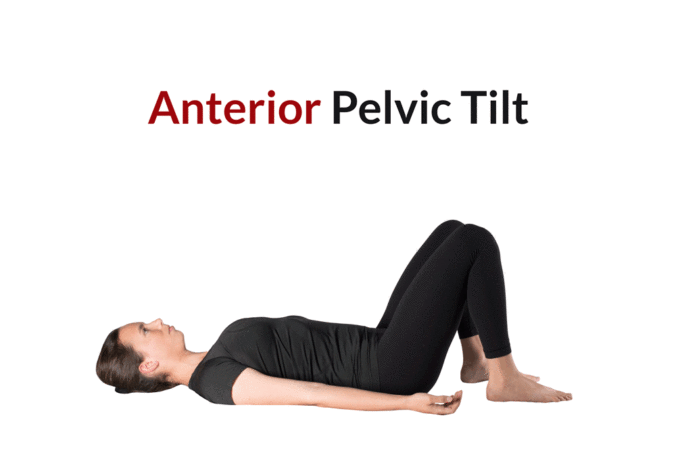
…in half kneeling:
…in tall kneeling:
Easy Quad Stretches
Let’s begin with some simple quad stretches that anybody can do.
Sidelying quad stretch
This one you can do without getting out of bed.
- Lie down on your side
- Grab the ankle of the top leg
- Pull the foot towards the butt
- Tuck the hips
- Bring the knee backwards into a mostly comfortable stretch
- Repeat for 3 sets of 30 second holds on each side
Prone quad stretch
This one is a little easier to get a stretch when on a firm ground rather than a soft bed.
- Lie down on your stomach
- Grab one ankle
- Pull the foot towards the butt
- Tuck the hips
- Repeat for 3 sets of 30 second holds on each side
Standing quad stretch
Use one hand to balance yourself. This is the quintessential quad stretch for track athletes.
- Using one hand, grab a doorway, wall, or something else to assist balance
- Use the other hand to grab the opposite ankle
- Pull the foot towards the butt
- Tuck the hips
- Repeat for 3 sets of 30 second holds on each side
Child pose
This one is not an intense quad stretch, but it is a safe, controlled way to bend the knee if you can kneel on it.
- Set up on your hands and knees on the ground
- Tuck the hips, pulling your belly button up towards the ceiling
- Push your butt backwards to your heels
- Stretch your arms out in front of you
Advanced Quad Stretches
The following stretches require greater coordination to achieve proper setup and generally stretch the quad more than the easy variations. Be careful if you’re trying these. There IS such a thing as too much.
Pretzel quad stretch
This one gives you good leverage to yank your foot, and also provides upper body twisting. It’s a good held as a stretch, like we’ll do here, but also good in a warm up when done for repetitions as a mobilization exercise. It’s especially good if you’ve read something on the internet that makes you think you need “thoracic mobility”.
- Lie on your side, preferably with a small pillow under your head
- Bend your top knee up towards your head
- Grab that top knee with the opposite hand and push it into the ground
- Grab your ankle of the other leg
- Tuck the hips
- Pull the ankle towards the butt
- Open the chest towards the ceiling
- Repeat for 3 sets of 30 second holds on each side
Side sit 90-90 quad stretch
This one is nice because you can look up at people while you do it if you want to have a conversation in the gym like an approachable human.
- Sit on the ground with knees bent up
- Shift weight to one butt cheek, letting both knees fall in that direction
- Tuck the hips
- Grab trailing ankle with hand
- Put other hand on ground for balance
- Pull the ankle towards the butt
- Turn the hips away from the ankle
- Repeat for 3 sets of 30 second holds on each side
Half kneeling quad stretch
This stretch is the single one I’ve seen butchered most often in gyms across the internet and country. The problems are always because people aren’t following rule number one: tuck the hips. Don’t be like the rest; make sure you tuck the hips when you do this one.
- Kneel on one knee
- Set other foot flat on the ground in front of the body
- Tuck the hips
- Repeat for 3 sets of 30 second holds on each side
To intensify this stretch, curl the toes up under the foot instead of leaving the top of the foot flat on the ground.
Half kneeling rear foot-elevated quad stretch
This is a variation of the previous quad stretch that drastically intensifies the stretching. I find this one unnecessary once the hip tuck is mastered for the other variation, but you could include this if you want to take things to the next level. Again, this is often butchered and requires incredible flexibility to do without compromising pelvic and low back position. You must be a hip tucking master to do this correctly.
- Elevate trailing foot on a low bolster or step (about 6-18 inches; most benches are too high unless you’re a giant)
- Place knee on ground in front of the elevated foot, kneeling up
- Set other foot flat on the ground in front of the body
- Tuck the hips
- Repeat for 3 sets of 30 second holds on each side
Sit on heels
This variation requires a lot of quad flexibility to do, but isn’t quite as exhausting as some of our previous quad stretches. This one fits well into many yoga routines, just like the child’s pose mentioned above. This is generally more comfortable and safer if sitting on a yoga block between the legs instead of directly on the heels.
- Kneel with both knees on the ground
- Place hands on the ground in front of you for balance
- Sit onto a yoga block or other bolster between the legs
- Tuck the hips
- Remove hands from ground and sit straight up
- Repeat for 3 sets of 30 second holds
Sit on heels and lean backward
This is a progression and the most advanced quad stretch I feel comfortable recommending. Do not try to be a hero. Do not jump right into this stretch. You must work up to this. And you must tuck the hips to not stress the low back.
- Kneel with both knees on the ground
- Place hands ont eh ground in front of you for balance
- Sit onto a yoga block or other bolster between the legs
- Tuck the hips
- Remove hands from ground and sit straight up
- Reach backwards, bracing one hand at a time on the ground behind you
- Repeat for 3 sets of 30 second holds
My 11 Best Alternatives to Quad Stretches
If you read the earlier sections about diagnosing why your quads are tight or why your knees hurt, you’ve maybe come to the conclusion that quad stretches aren’t actually what you need.
I didn’t want to leave you hanging, though, so I built out a thorough section here that will offer you alternative mobility drills you can use to regain motor control and keep those quads from getting tight in the first place. Prevention is the best cure, right?
I’ve listed one breathing drill and eleven mobility drills in a progression. I would recommend doing them in order. After that you can try the strength exercises. Both will be important, but training mobility before strength is also important.
Control Pause
To fix a poor breathing pattern, we’re going to use an exercise from the Buteyko Clinic called the Control Pause.
- Sit comfortably in a chair with relaxed shoulders and feet flat on the floor.
- Take a few quiet breaths through your nose with lips sealed, then on the last one, plug your nose at the end of your resting exhale.
- Time yourself until you feel the urge to breathe in again. This next breath in should be quiet; if you’re gasping, you waited too long to stop the timer.
Our goal on this exercise is to build up to a 40-second pause after exhaling. This teaches your body to tolerate carbon dioxide and is the first step to prevent overbreathing. During each test, practice moving the belly and chest simultaneously.
Repeat the test at least five times per day, also adding in daily walking or light cardio with only nasal breathing. If you have to breathe through your mouth, the cardio is not easy enough.
Mobility Drills
These drills teach you how to use muscles that like to be lazy. You can think of them as stretches, activation drills, breathing drills, whatever you like. Just make sure you’re feeling the correct muscles. If you’re having trouble, you’re probably trying too hard and need to relax.
Supine 90-90 posterior pelvic tilt
This is the easiest way to learn a posterior pelvic tilt.
- Lie on your back with your feet on a chair or bench and knees bent to 90 degrees
- Exhale and reach both knees up towards the ceiling one inch
- Check to make sure your low back is in the ground, but your tailbone has risen off the ground
- Ensure your abdominal muscles are off
- Check to make sure you feel your hamstrings on the backs of your thighs working to hold yourself up
- Hold for 8 slow nasal breaths
If you feel this in your quads or hip flexors, you need to tuck your hips more.
You should feel the hamstrings holding your hip tuck throughout.
Supine hooklying posterior pelvic tilt
This is the first progression away from the supine 90-90 posterior tilt. It’s generally more challenging to perform correctly, but should feel similar overall. Added bonus is that you don’t need to find a chair or bench.
- Lie on your back with your feet flat on the ground and knees bent
- Exhale and reach both knees away from you one inch
- Check to make sure your low back is in the ground, but your tailbone has risen off the ground
- Ensure your abdominal muscles are off
- Check to make sure you feel your hamstrings on the backs of your thighs working to hold yourself up
- Hold for 8 slow nasal breaths
If you feel this in your quads or hip flexors, you need to tuck your hips more.
You should feel the hamstrings holding your hip tuck throughout.
Alternating toe touch
Since we know an anteriorly tilted pelvis can restrict your mobility and increase quad activity and tightness, we want to reverse this posture and find new movements that encourage flexibility. The alternating toe touch is a great one because it’s so simple.
- Take a wide stance with feet just outside shoulder width
- Turn toes out slightly
- Tuck your hips
- Maintaining slight pressure through the heels, bend over and touch one set of toes with both sets of fingertips
- Ensure that both hands reach the foot at the same time
- Maintaining slight pressure through the heels, raise up slightly and return down to the other foot
- Repeat for 20 total toe touches
You should feel slight pressure through your heels throughout.
Glute bridge
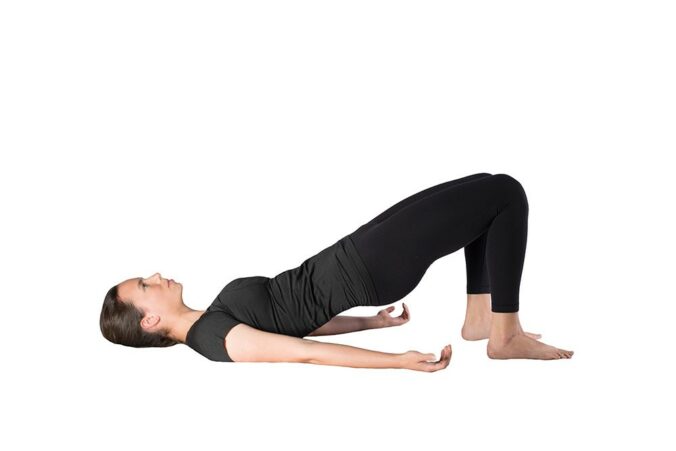
Glute bridges are, in my opinion, overhyped. They are, however, a great tool when you don’t have any equipment and when you simply want to teach the hips to start moving with your newfound posterior pelvic tilt.
- Lie on your back with feet flat on the ground and knees bent
- Exhale and reach both knees away from you one inch
- Check to make sure your low back is in the ground, but your tailbone has risen off the ground
- Ensure your abdominal muscles are off
- Check to make sure you feel your hamstrings on the backs of your thighs working to hold yourself up
- Maintaining the hip tuck, slowly raise the tailbone towards the ceiling
- Ensure you feel an intense glute squeeze at the top
- Lower down one spinal bone at a time to make sure you maintain the hip tuck
- Repeat for 20 reps
You should feel your glutes, especially at the top, doing the work.
Active Thomas test quad inhibition
This one is a bit involved, so it’s not for the faint of heart. The others are generally enough, but if you’re well-versed in your own body language and particularly stiff in the quads, this might be the right answer for you.
- Lie on your back on a bench
- Place a foam roller or similar bolster underneath your knees
- Bring one knee up, bent to 90 degrees
- Tuck the hips
- Push the other knee down into the roller
- Hold for 5 slow nasal breaths
- When inhaling, straighten the knee that’s bent up
- When exhaling, allow the knee to slowly return to it’s bent starting position
- Repeat for 3 sets on each side
You should feel your low back firmly in the bench beneath you as well as your glutes and hamstrings activating in the leg on top of the foam roller.
Strength Exercises
These strength exercises are meant to teach you how to keep those good postures, positions, and muscle activation patterns you learned from the mobility drills above. You can also get pretty strong, lean, and muscular from doing these as long as you have sound diet and exercise programming. Again, make sure you’re feeling the correct muscles.
Kettlebell pullover
This exercise is great for not only training the lats, but also for keep a strong, stable core.
- Lie on your back with feet flat in the ground and knees bent
- Exhale and reach both knees away from you one inch
- Check to make sure your low back is in the ground, but your tailbone has risen off the ground
- Ensure your abdominal muscles are off
- Check to make sure you feel your hamstrings on the backs of your thighs working to hold yourself up
- Hold a 5-lb weight directly above your head
- Allow the weight to fall backwards towards the ground
- Continue until just before your back wants to arch off the ground
- Hold this position for 8 slow nasal breaths
You should feel the muscles in your armpits and mid back as well as your outer, lower abdominals doing the work.
Plank from knees to feet
Here’s a way to re-imagine the plank and how we perform it. This one is commonly messed up in gyms and message boards around the world, so bring your A game here if you want to impress the onlookers.
- Set up on hands and knees on the ground
- Tuck the hips, pulling the belly button up towards the ceiling
- Check to make sure your outer, lower abs are slightly activated
- Set the shoulders down to secure the arms with the armpit muscles
- Slowly straighten one leg at a time
- Check to make sure you still feel the same outer, lower abdominal muscles
- Hold for 60 seconds
You should feel the outer, lower abdominal muscles and some muscles in your armpits (the serratus anterior) holding you up.
Narrow stance goblet squat
This squat variation is basically the furthest thing from a traditional squat with a barbell on your back. This one is better for your posture, mobility, and flexibility.
- Stand with feet parallel and about hip width apart, holding a 5-lb weight
- Tuck the hips
- Keeping slight pressure through the heels, squat down until just before the back needs to round
- Maintaining slight heel pressure, return to standing position
- Repeat for 10 reps
If you find you cannot get halfway down, you might try this with both heels elevated about one inch to assist your ankle mobility and pelvic stability. It is not cheating to do it this way.
You should feel the quads and outer, lower abdominals doing the work.
Romanian deadlift (RDL)
Time to learn the hip hinge! The RDL is not only a great assistance exercise for deadlift strength, but also a great teaching tool for proper hip loading to protect the low back. When done incorrectly, poor pelvic posture leads to limitations in hip mobility and increased tension in the low back and quads.
- Stand with feet hip width apart and a weight or barbell in the hands
- Tuck the hips to reduce any excess anterior pelvic tilt and lumbar lordosis
- Maintaining slight heel pressure, push the butt backwards and bow over to lower the weight
- Ensure pressure stays on the heels
- Lower until just before the low back wants to bend
- Maintaining slight heel pressure, push the butt forwards to return to standing
- Repeat for 10 reps
You should feel the backs of the thighs and glutes doing the work.
Single leg Romanian deadlift (SLRDL)
The single leg RDL is a balance-challenging deadlift variation. It’s nearly identical in execution to the traditional RDL.
- Stand on one foot with a weight in your hands
- Tuck the hips to reduce any excess anterior pelvic tilt and lumbar lordosis
- Maintaining slight heel pressure, push the butt backwards and bow over to lower the weight
- Ensure pressure stays on the heels
- Lower until just before the low back wants to bend
- Maintaining slight heel pressure, push the butt forwards to return to standing
- Repeat for 10 reps on each leg
You should feel the back of the thigh and the glute of the leg you’re standing upon doing the work.
Deadlift

The deadlift is the king of strength exercises, but easily misused. Using the deadlift to feel better, improve posture, and reduce tightness in the quads may require lighter weights than experienced lifters are accustomed to using. I have taught a professional soccer player—who was lightning fast—how to deadlift; he trembled with 95 lbs on the bar. Check your ego and you will strengthen back up.
- Stand with feet hip width apart and a weight on the ground between the feet
- Tuck the hips to reduce any excess anterior pelvic tilt and lumbar lordosis
- Maintaining slight heel pressure, push the butt backwards and bow over to lower the weight
- Ensure pressure stays on the heels
- Lower until just before the low back wants to bend
- Bend the knees the rest of the way until the hands can grasp the weight without lengthening the arms and bending at the back
- Grasp the bar and reverse the motion to stand back up
- Lower the bar and repeat for 10 reps
More experienced lifters will start at the bottom, grabbing the bar and THEN straightening out the back. This is fine, but if you aren’t doing your deadlifts correctly, it is more difficult to fix them this way. Try it the way I’ve outlined above until you’re feeling the correct muscles, then you can try it from the bottom-up again.
You should feel the glutes at the top and the hamstrings throughout the entire movement.
Uncommon Causes of Tight Quads
It’s easy to get caught up thinking that quad symptoms are quad problems. For example, if the quad is tight, then it needs to be stretched.
Hopefully by now you realize that it’s not that simple. And hopefully by now you have some other tools to help loosen your quads, free up your knees, and just feel and move better.
But maybe you don’t. Sometimes, solid exercise with good technique isn’t enough. Stretches don’t always work. Breathing drills don’t always work. Sometimes strengthening isn’t enough. What do you do then?
You have to ask yourself what you are doing OUTSIDE of your movement that could be affecting you. In this section, I will outline some uncommon, less intuitive reasons your quads might be staying tight.
Working Hard at Your Job (Even With Good Ergonomics)
Now, don’t get me wrong here, ergonomics are important. If your company offers an ergonomic workplace diagnosis, you should definitely schedule an appointment. But I imagine you’ve already considered ergonomics: seat height, monitor height, desk height, support, etc.
If you haven’t, definitely take the time to evaluate your work set up and consider investing in a standing desk. I love my Uplift 4-Leg Standing Desk, but there’s some Varidesk and Fully desks on Amazon, too.
Quick note: those links are affiliate links, which means if you buy stuff on Amazon after clicking my link, you’ll pay the same price, but I’ll receive a small commission on your sale. It’s a win-win.
The real point I want to make, however, is about stress.
How Stress Begets Quad Stretches
Excitement activates muscles. We get more twitchy, fidget, and speak louder (or, if you’re my roommate, you start yelling even though I’m right next to you).
What we notice is that when someone is really tuned in to their work, they tend adopt postures that might not be the greatest for their joints and muscles, but tend to be excellent for focusing and excelling at the project in front of them. Being relaxed is generally a good thing, but when you’re working hard towards a looming deadline, you just gotta get it DONE.
An example: I’ve been pouring my heart and soul into this article. I want to make sure it’s thorough, but also easy enough to read. And maybe a little funny at times. But it’s been 7.5 hours and I’m not even done with the first draft yet! When I’m deepest in the flow of writing, I sit up really really tall. My arched back helps me tilt my head backward which helps me see the words on the screen. And when I’m done writing, you best believe my quads are tight (as is my back and face, but that’s a topic for another article).
Sometimes your body doesn’t feel great because you have other important things to worry about. It’s totally okay to prioritize your work, family, hobbies, whatever is important to you. But also remember to take care of your body.
Poor Sleep
Sleep is your body’s number one recovery strategy. As we do things—like running, staying awake, and taking care of children—we accumulate fatigue. Sleep helps us come back from that fatigue fresh and ready for the next day.
If you don’t sleep long enough, your brain can’t hit the deeper cycles of sleep. It’s still pretty good for you, but five hours of sleep is not enough to recover from our daily lives.
If you don’t sleep soundly, similar problems happen. This is why problems like sleep apnea are such a huge issue. The quality of your sleep is likely the issue if you sleep eight or nine hours a night and still don’t feel rested.
Many things can disrupt your sleep. Run your own self-experiments to discover what you should be working on. Even food can be the issue!
If you’re interested, I’ve compiled a list of resources and advice pertaining to sleep that I like to send to clients.
Overeating
Speaking of food, overeating could be leading to your quad tightness. When we take in a big meal, it gets stored in the stomach over the medium term. It’s slowly released into the rest of the digestion, allowing the small intestine time to absorb the nutrients from your food.
When eating a really big meal, the abdominal cavity fills up with that food. If it’s big enough, or comprised of foods that don’t agree with our body, we experience bloating or gut distention.
Guess what this does to your posture.
When the belly is full and pooched, our pelvis tilts forward. The abdominal muscles shut down and the low back arches. And as we mentioned before in our discussion of posture and the anterior pelvic tilt, this gives the quads leverage to turn on. Hence tight quads.
In addition to bloating, overeating also leads to generally higher inflammation in the body. Keep on the lookout for poor dietary habits!
Gut Dysfunctions
Bloating is not always caused by overeating. It’s also caused by gas.
Traditional estimates suggest there are 10x as many microbes in our body than our own human cells. Many of these live within the intestines, symbiotically helping us digest our food. But some people have weird numbers of bacteria. Some have extra bacteria that make smelly farts. Some have too few bacteria that help digest food. Eating certain foods may increase gas formation and, subsequently, bloating.
As we discussed previously, bloating causes postural issues. In addition to the postural problems, however, there’s also other systemic responses in the body, including increased intestinal permeability. This “leaky gut syndrome” allows large particles to escape the digestive system. These particles are innocuous when going through the intestines, but when they get into the blood, they circulate throughout the entire body. Your immune system might even find them and attack them! This can cause issues throughout the body, like in the skin and brain, and show signs of inflammatory attacks. Think acne, dermatitis, and inexplicable brain behaviors.
Gut dysfunction is important enough to warrant a lifetime of study for some. The purpose of this article is to help you realize that it could be the deeper cause of your quad muscle woes. If you suspect gut dysfunctions, do more research on your other symptoms and talk with your doctor. To get you started, I’ve compiled a list of resources on the regularity of bowel movements and accompanying gut problems.
What do you want next?
Appendix: Anatomy Related to Quad Stretches
Here is an overview of the anatomy of the quadriceps and nearby bones, ligaments, nerves, arteries, and veins.
Bones Involved in Quad Stretches
Pelvic bone
The pelvis serves as one of the major centerpieces of the skeletal structure. It catches the abdominal organs and provides an attachment side for various muscles, include one of the quads. Major structures to note for our discussion on quad stretches are the anterior inferior iliac spine (AIIS) and the iliac crest.
The anterior inferior iliac spine is where the rectus femoris attaches. This important quad muscle is the only one that can also flex the hip joint due to its attachment site on the pelvis.
The iliac crest is where the abdominal muscles attach. This allows them to be one of our primary postural muscles.
Femur
The femur is the thigh bone. It covered on the front and sides by the four quadriceps. It comprises one third of the knee joint.
Tibia
The tibia is the major bone of the lower leg and one third of the knee joint. Once the quadriceps pass the patella, the tibial tuberosity serves as the final, most distal attachment for the quadriceps muscle.
Fibula
The fibula neighbors the tibia, but does not participate in the knee joint.
Patella
The patella or “knee cap” not only gives the quadriceps a place to attach, but also gives them better leverage to forcefully straighten the knee. It comprises one third of the knee joint.
Joints Involved in Quad Stretches
Sacroiliac Joint
The sacroiliac joint (SI joint) is where the sacrum joins with each half of the pelvis. There are two of these joints in total.
Issues in the sacroiliac joint often manifest as non-descript low back soreness or tightness. This area can especially be overstressed if doing quad stretches incorrectly or lifting weights with a heavily arched back. Tightness in the sacroiliac joint is highly correlated with persistent anterior pelvic tilt.
Hip Joint
The hip joint is considered a ball-and-socket joint due it’s shape: the femoral head is the ball, and the acetabulum of the pelvis is the socket. This allows the hip joint to move in three dimensions.
Like every joint, hip mobility is impacted by the position of the bones around it.
Knee Joint
The knee joint is a combination of the femur, tibia, and patella. Though the fibula does not joint together with the other structures of the knee joint, it is still vital to knee function as it impacts knee alignment.
The knee is simplified as a “hinge” joint that bends in one dimension, but subtle rotations, abduction, and adduction greatly impact both the available knee mobility as well as the joint’s subjective feel.
With the knee locked, the tibia rotates externally to achieve the final ~10 degrees of knee extension.
When unlocking, the tibia must internally rotate to begin flexion.
Tendons and Ligaments Involved in Quad Stretches
Quadriceps Tendon
All four quadriceps come together to attach to the same tendon, the quadriceps tendon, before latching onto the patella.
Patellar Ligament or Patellar Tendon
After the quadriceps tendon makes contact with the patella, this tendon continues on to attach to the tibial tuberosity. This tendon now ties together two bones, so we should name it the patellar ligament, but you may find it called the “patellar tendon” in some places.
Iliotibial Band
The iliotibial band (IT band) is a thickening of the fascia lata on the lateral side of the thigh. It is connective tissue, not muscular tissue. It serves as an attachment point for both the tensor fascia lata and the gluteus maximus.
Muscles
Vastus Lateralis
The vastus lateralis is the outside quad muscle. It’s HUGE.
It’s primary function is to extend the knee, but it can also internally rotate the hip in closed chain activities and pull the patella laterally.
Vastus Medialis
The vastus medialis is the inside quad muscle. Bodybuilders call the distal portion the “tear drop” for it’s shape.
It’s primary function is to extend the knee, but it can also externally rotate the hip in closed chain activities and pull the patella medially.
The vastus medialis obliquus (VMO) is often cited as an important muscle for proper patella tracking and alignment, but practice suggests the orientation of the femur is more important for improving VMO activity.
Rectus Femoris
The rectus femoris in the middle, superficial quad muscle. It is also a hip flexor as it crosses the hip joint, attaching to the anterior inferior iliac spine (AIIS) on the front of the pelvis.
The primary function of the rectus femoris is to extend the knee and flex the hip, but it can also externally rotate the hip.
Vastus Intermedius
The vastus intermedius is the middle, deep quad muscle. It’s often forgotten since it hides behind the three other quads, but it has an intimate relationship with the femur.
The primary function of the vastus intermedius is to extend the knee.
Tensor Fascia Lata
The tensor fascia lata (TFL) is a tiny muscle with a lot of leverage and a try-hard personality. In various positions it can flex, extend, abduct, adduct, internally rotate, and externally rotate the hip.
Gluteus Maximus
The gluteus maximus is the largest muscle in the body as measured by cross sectional area. It attaches to the iliac crest, the posterior surface of the sacrum, the lumbodorsal fascia, and the sacrotuberous ligament proximally. It attaches to the femur and the iliotibial band distally.
The gluteus maximus is most well known for being a strong hip extender, but it can also adduct, abduct, and externally rotate the hip. It also assists in knee extension in closed chain activities.
Neurovasculature
Femoral Neurovascular Bundle
The femoral neurovascular bundle is comprised of the femoral sheath wrapping the femoral nerve, femoral artery, and femoral vein in that order from medial to lateral.
The femoral neurovascular bundle is exposed near the top of the thigh This leaves it susceptible to injury, but also allows it to be used for drug administration or blood draws.
Sciatic Nerve
The sciactic nerve is the major nerve for the posterior lower extremity. It’s HUGE; you can’t fathom how big it is until you see it in a cadaver.
The sciatic nerve originates from the L4-S3 spinal nerves, runs down into the pelvis where it exits through the greater sciatic foramen. It then runs underneath, on top of, or through the piriformis muscle, which can interfere with the nerve’s activity. A taut piriformis muscle can occlude the sciatic nerve and lead to sciatica.
Additionally, the occlusion of the sciatic nerve could also arise earlier due to a bulging intervertebral disc pushing on the spinal nerves before they even combine into the larger sciatic nerve.
The sciatic nerve is the the nerve that makes your legs fall asleep when you take a poop.
Tibial Nerve
The tibial nerve is a more distal version of the sciatic nerve. That is, if the sciatic nerve were severed, the tibial nerve would lose its function. We change the name of the nerve to indicate where it is located.
The tibial nerve supplies the muscles of the posterior lower leg. It gives us strong plantarflexion, toe flexion, and ankle inversion.
Common Fibular Nerve
The common fibular nerve is the other major branch of the sciatic nerve. This wraps to the outside of the lower leg and breaks into two more branches: the superficial fibular nerve and the deep fibular nerve.
The common fibular nerve is ultimately responsible for two major actions of the foot and ankle:
- Ankle eversion due to the superficial fibular nerve
- Ankle dorsiflexion due to the deep fibular nerve
Image Licensure
The pictures of humans in this post are all original works.
The pictures with the anatomical drawing of the lateral thigh are all original works.
The remaining anatomical drawings contain images from Henry Gray’s public domain work “Anatomy of the Human Body” cataloged by Bartleby. Nearly all of these have been modified with original work, such as the structure highlighting in the anatomy appendix.
Conditions allowing reuse
- Educational lectures in an accredited University or secondary school
- Student school projects
- Agreed licensure for other use
Conditions not allowing reuse
- Anything not mentioned in the allowed conditions above, including but not limited to:
- A blog
- A business website
- Videos
- Professional presentations
- Other commercial uses
If you’d like to use these images for your project, I’m more than happy to work with you on reaching a licensure agreement. Please contact me.
Otherwise, I’d politely ask that you don’t steal these images. Dozens of hours and over $10,000 USD worth of equipment went into making these images and the rest of this post.
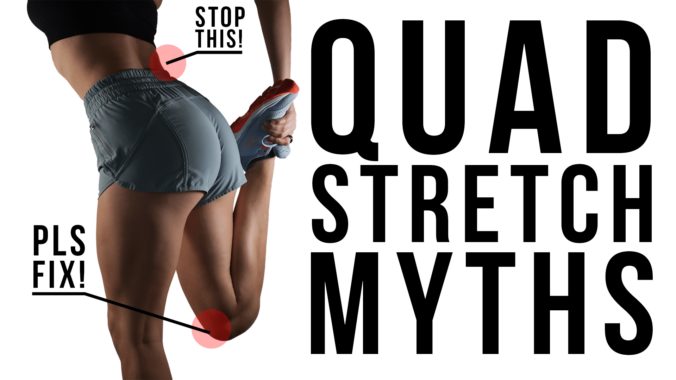

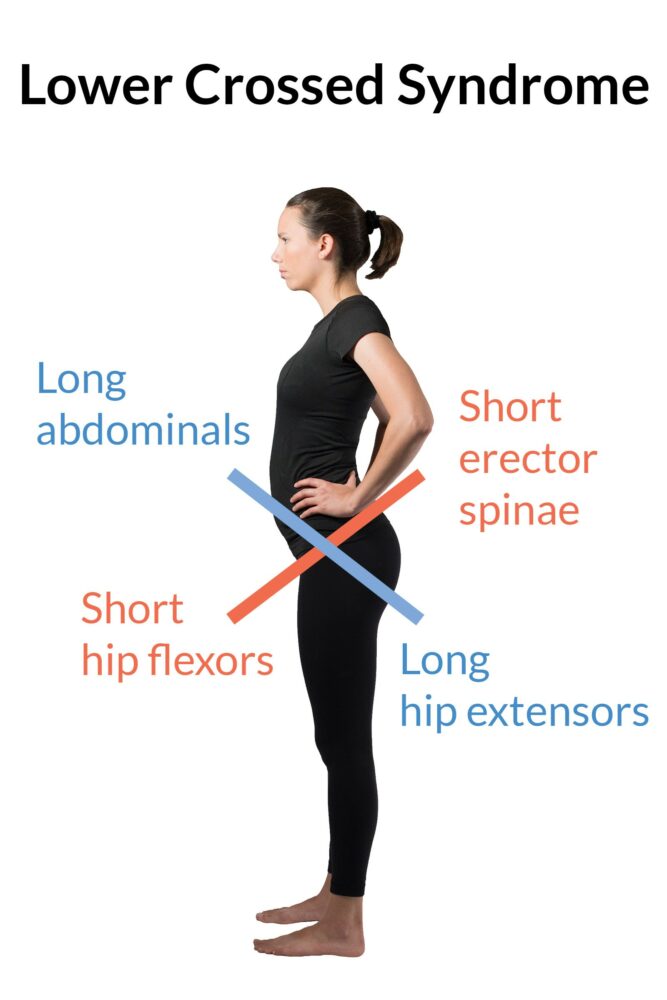
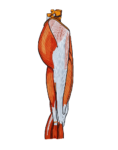
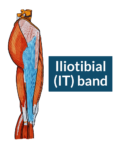
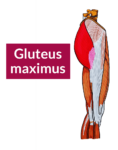
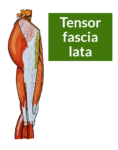
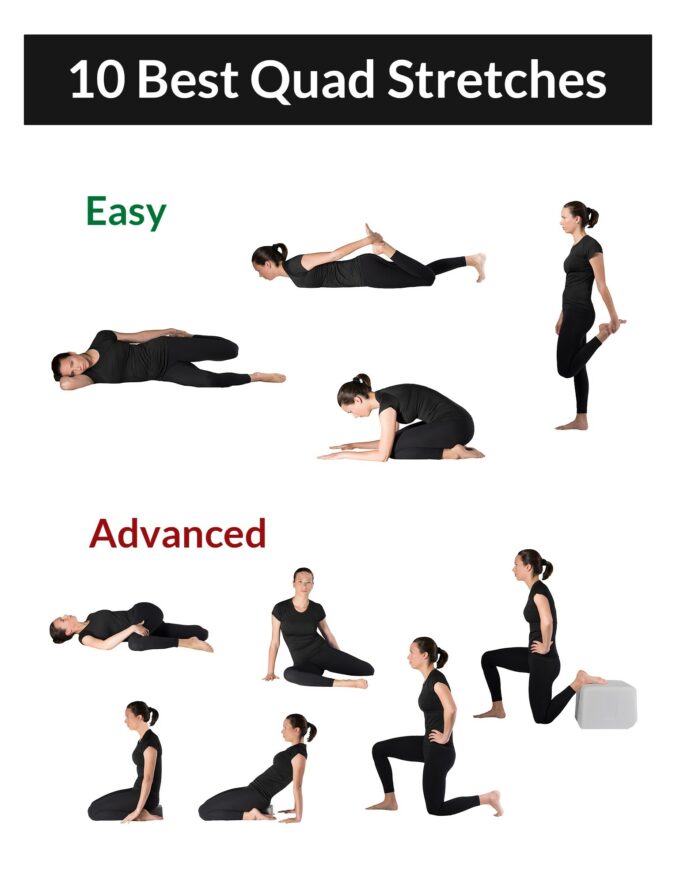
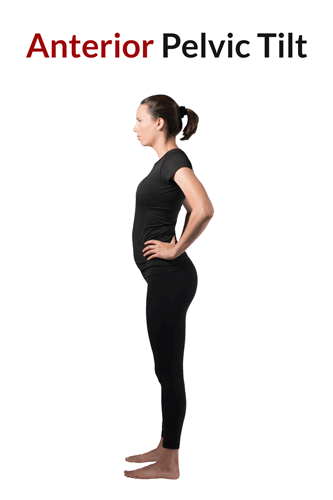
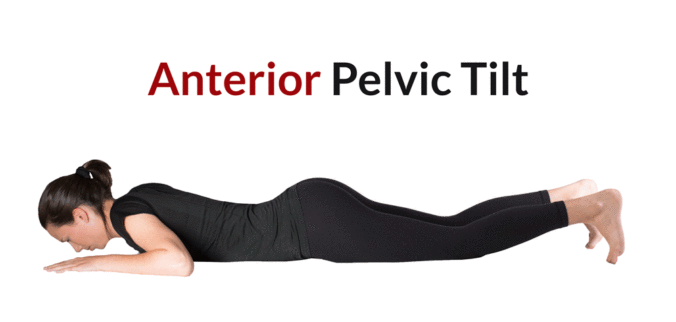
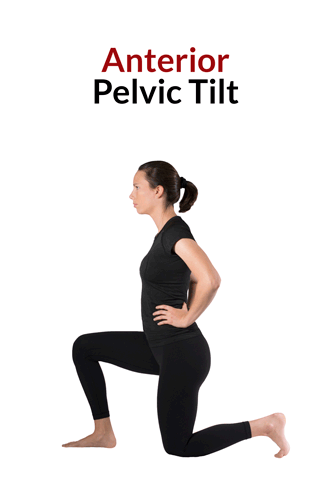
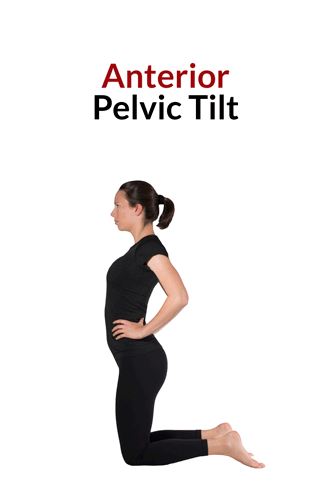
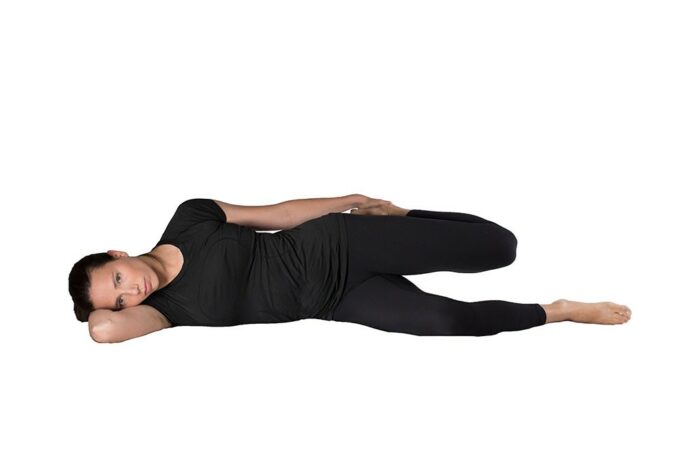
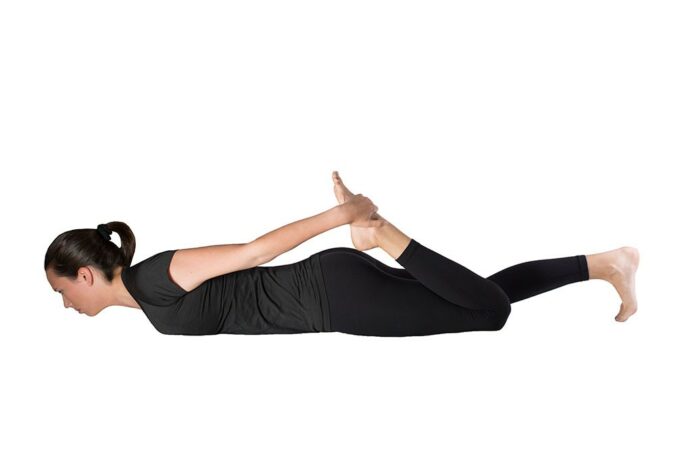
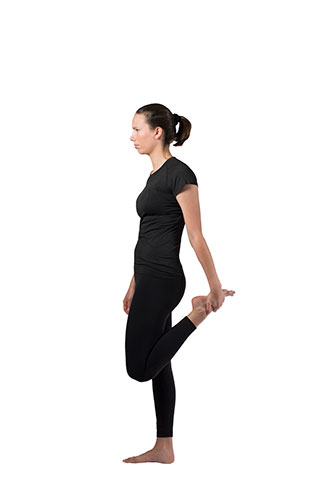
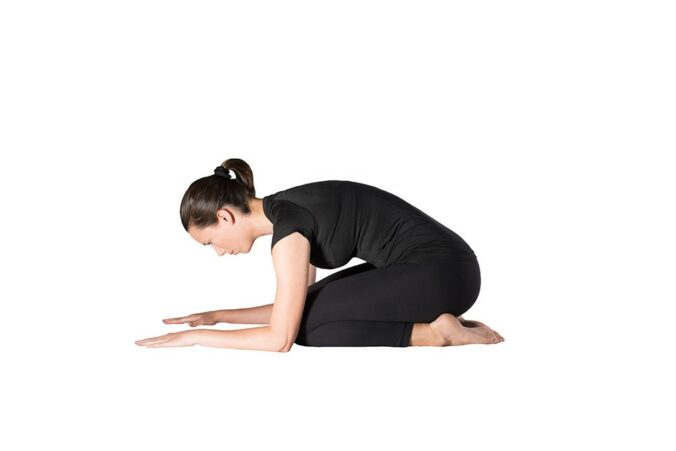
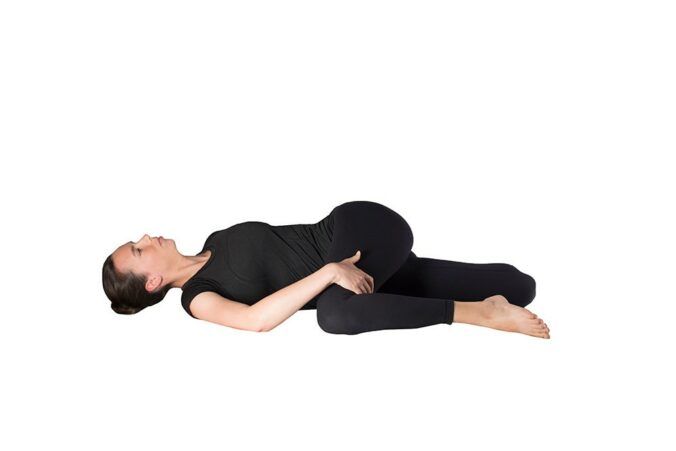
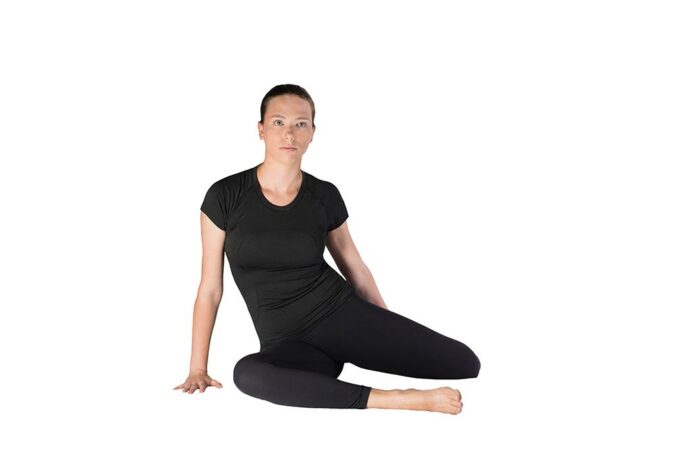

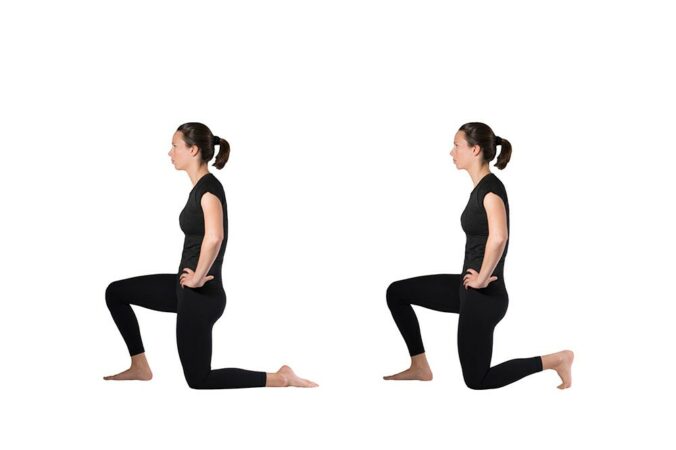
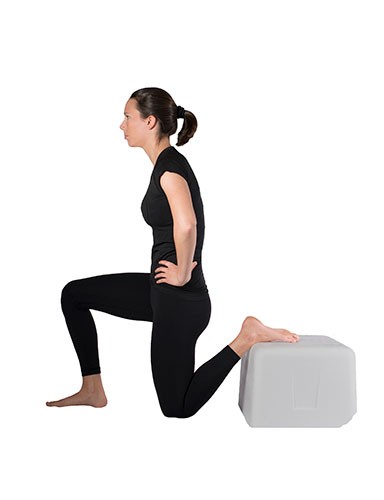
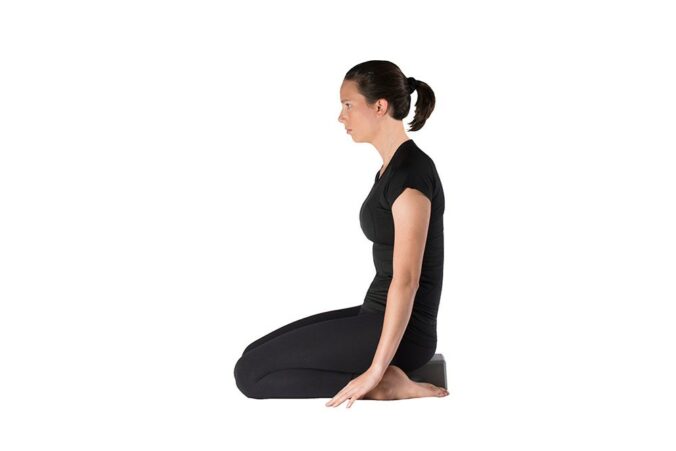
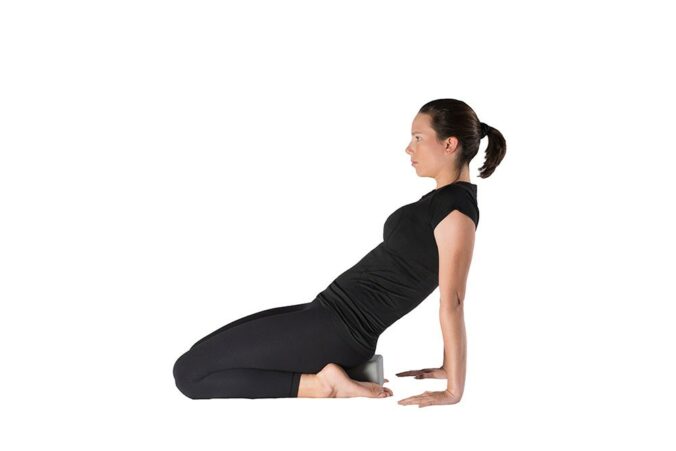
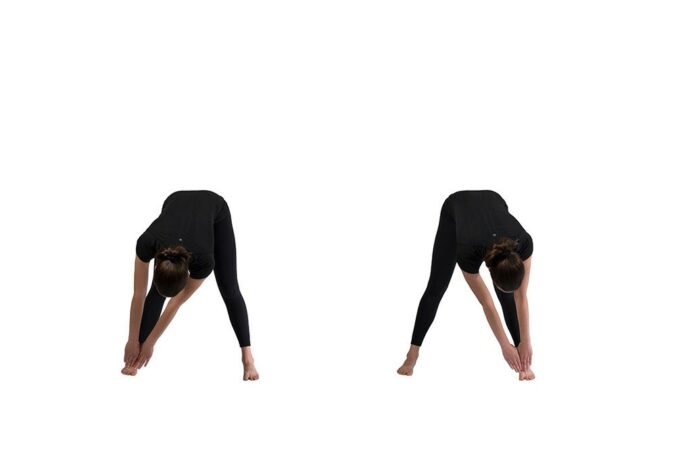
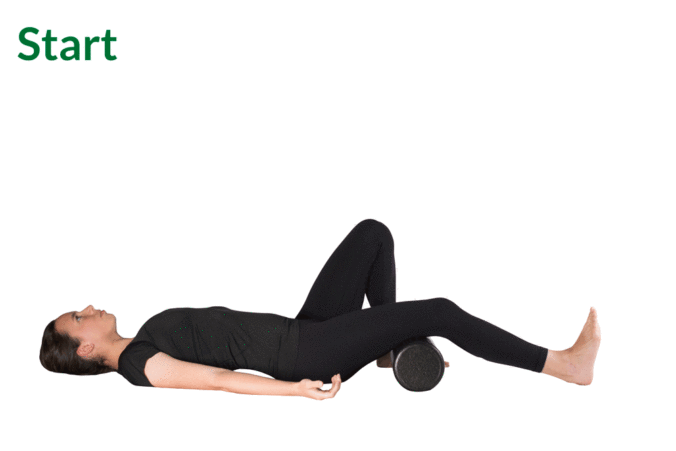
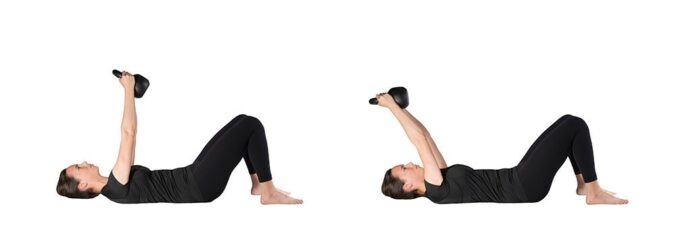
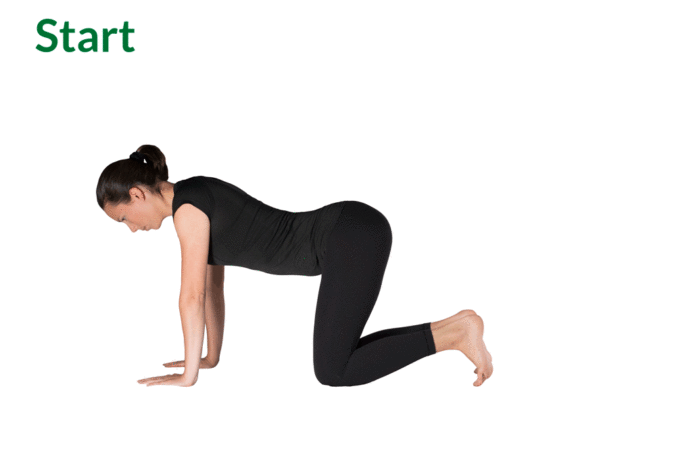
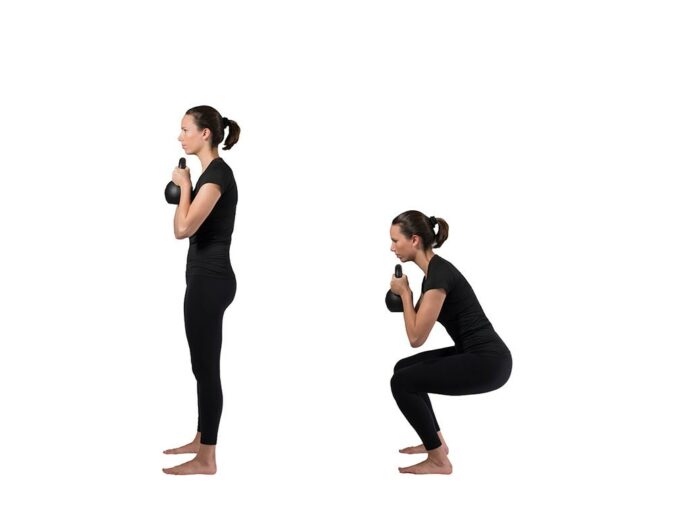
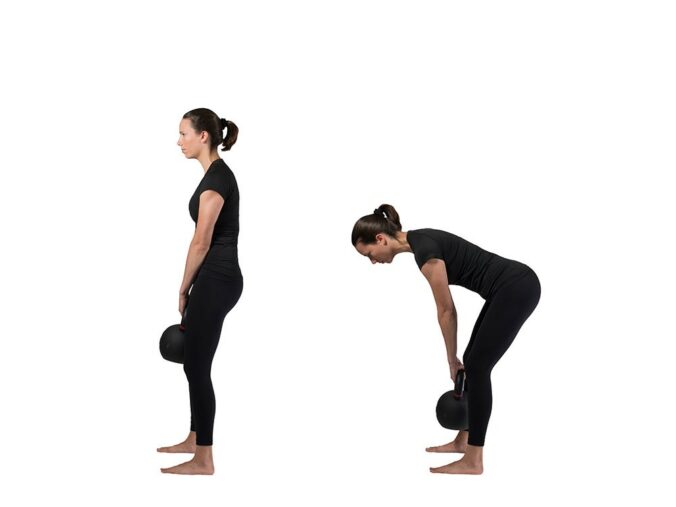





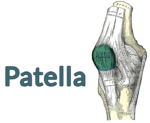


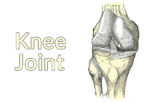
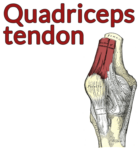
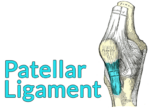
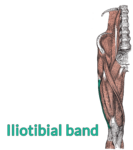



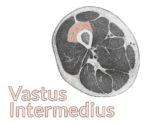

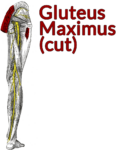
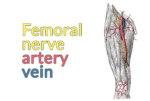



Add some color to this commentary.